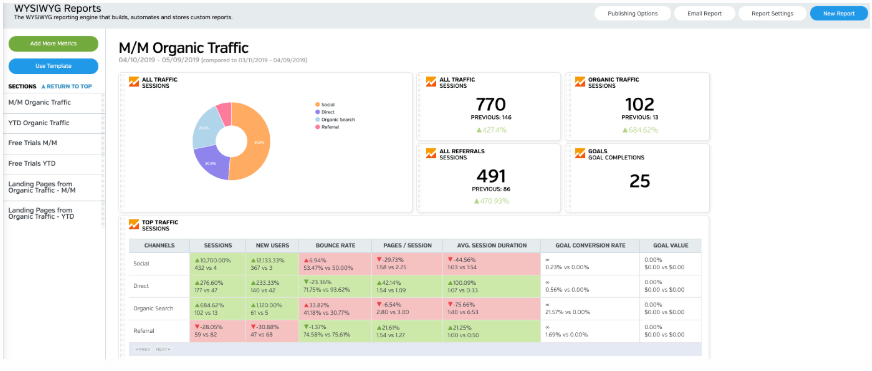No longer posting on your company blog can happen innocently enough. You probably decided to skip a day or a week because of all your other work deadlines. Before you knew it, months had gone by without a post.
Now, you’re wondering if you should resume posting or not, or whether just to kill your blog orphan. This post will help you determine if you can devote the time and effort required to revive your company blog successfully and investigate why having an active blog is important for your business.
How An Inactive Blog Hurts Your Site
You may be wondering why having an inactive blog is important enough to warrant a discussion about reviving it. After all, what harm could an old blog do just sitting out there on the Internet? While it may seem harmless, an inactive blog is detrimental to your company’s SEO.
Posting new content trains search engine crawlers to visit your site more often. Conversely, since you’ve stopped posting content, you’ve trained the crawlers to visit you less frequently, making your content less likely to show up in search results. To retrain the crawlers, you’ll need to start posting again regularly.
Also, an inactive blog can give the wrong impression especially if you were using the blog (or comments) to support your company’s customer service. No longer posting or responding on your blog can make it seem like your company is unavailable or hard to communicate with, which is not what you want customers to think.
Reviewing What Went Wrong
Before deciding whether or not to revive your company blog, you need to analyze the original reasons for starting it — and the reasons why the blog failed to stay alive in the first place.
There are many reasons for starting a company blog, such as driving traffic to your website, converting traffic into leads, establishing authority on a subject, interacting more with current or potential customers, and so on.
Likewise, there are many reasons why your company may slack off on posting to the blog.
- Blog writing is no longer a priority.
- The principal bloggers ran out of ideas.
- There wasn’t a long-term strategy for the blog.
- The person responsible for the blog suddenly has to take on more responsibilities.
Once you’ve established true motivation for starting the blog and the obstacles that prevent more frequent posting, you can brainstorm the changes you would need to make to reinvigorate the blog. For example, maybe you need to switch goals from “explaining how your products work” to “building more customer loyalty.”
After you’ve identified these necessary strategic changes, determine whether or not reviving the blog will be worth the effort of making these adjustments.
If You Decide To Revive Your Blog
Once you’ve figured out why your blog trailed off in the first place, you can set about successfully reviving it. The first step is to identify which person (or people) will handle writing posts. Consider hiring a full-time blogger if no one on your team has the time to write right now, or bringing in a ghostwriter to help out with some posts.
After you’ve determined who will be writing the blog posts, create a schedule to keep everyone accountable and make sure they can deliver on it. Blog posts need to be more frequent than just once a month or once a week, or you won’t encourage search engine crawlers to visit your website more often, which affects search visibility (which I mentioned above).
If you’re keeping the writing in-house, have the writers brainstorm a list of potential topics they think would be a good fit, and go over them together. Then choose a few topics per blogger and have them write a couple preliminary posts.
While this may seem like a lot of work, this approach will accomplish several things. One, it will reveal if your writers can execute on a decent percentage of their ideas. Two, it will prove if they truly have time to write the posts before you commit to restarting the blog. Finally, it will ensure that you have plenty of posts for the initial push if you decide to go ahead with reviving the blog, since getting momentum at the start is key.
Why You Shouldn’t Delete Your Old Blog
Maybe you’ve gone through the steps above and decided that — for one reason or another — you don’t want to (or can’t) resurrect it right now. While it may be tempting just to delete your inactive blog and pretend like it never existed, there are multiple reasons why you shouldn’t do this.
First of all, you’ll lose all the backlinks your blog has built up over time, which will negatively impact your domain’s search engine ranking. In addition, readers trying to click on referral links to older content will be frustrated when they get a 404 error. Landing on an error page could adversely affect their opinion of your brand.
Companies can still share old blog content. It may even go viral, as one company found when they unintentionally stopped posting. Social engagement can in turn bring your company more business, even if you haven’t posted to the blog for a while.
However, there’s no way around the fact that your website stats and traffic will decrease if you decide not to revive your blog. Search engines need new content to crawl. Less new content = less search engine placement = less traffic.
It’s easy to continue ignoring your old company blog once you haven’t posted to it for a while. However, your blog represents a prime piece of Internet real estate that is well worth the effort — if you can commit to posting regularly, that is.

White Labeled and Branded Reports. Drag and Drop Editor. Automate your SEO, PPC, Social, Email, and Call Tracking Reporting.



